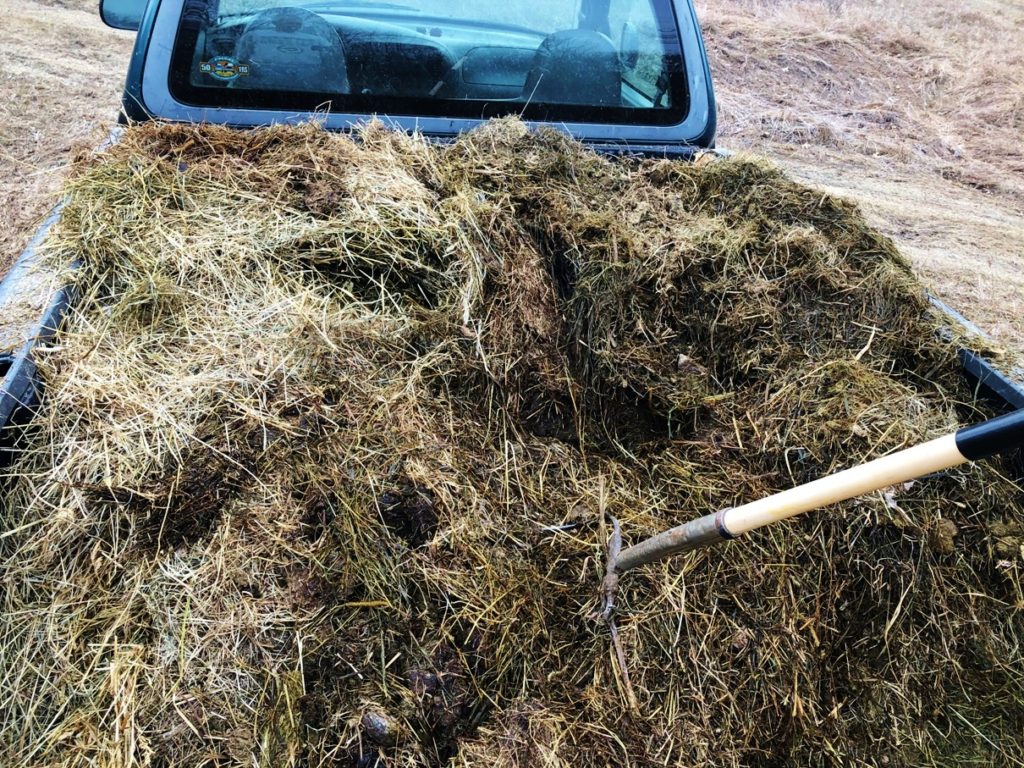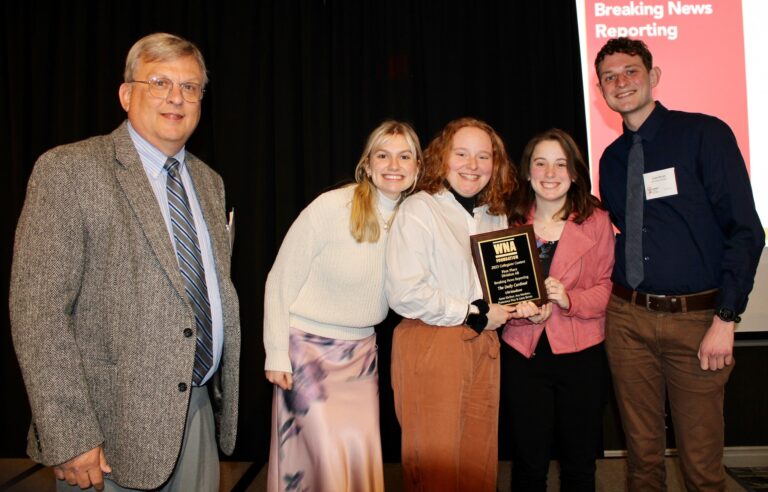Back Home by Chris Hardie
» Download this column as a Word document
» Download photos that accompany this story
» More columns by Chris Hardie
» Chris Hardie’s headshot
There are always a few weeks of the year when we’re trapped in the no man’s land between the seasons. It’s keenly felt between winter and spring, where we bounce between 60-degree days and heavy snowstorms — and everything in between.
The only certainty is plenty of mud as the frost is slowly pulled from the ground. The Russians call it rasputitsa, the season between winter and spring when unpaved roads become difficult to travel.

On the farm, it’s time to clean the barns and the winter feeding areas. I’ve been slowly working on one area during the past few weeks. Hay makes a great insulator. Even with warm weather and rain, there are still patches of ice underneath the layers. As the layers thaw I’ve been peeling them back with a manure fork and throwing them into the back of my pickup.
Yes, I am a glutton for punishment, but there is a reason why I haven’t used the skid steer and manure spreader. There will be a time to bring out the heavy equipment when I tackle the main feeding area, but I wanted to avoid digging up the grass. So, my tools have been a manure fork, rake, scoop shovel and wheelbarrow.
The manure fork proved to be a problem because the head of the fork kept coming out of the handle. Needing to dig the fork out of the pile after a mighty heave is both irritating and tiresome. Since I don’t weld, I shoved a couple strips of cardboard into the hole of the handle and pounded the fork head down. So far the fix has held.
Some of the dried manure went into our garden, where I will work it into the soil. The uneaten hay and manure I’ve put into piles to make some nice compost.
It’s been slow work, especially because what’s loaded by hand needs to be unloaded by hand. But there’s something satisfying about being able to see the progress.
An hour here, an hour there.
A blister here, a blister there.
A curse here, a curse there.
After seven pickup loads, the first winter-feeding area is clean.
Now the real work begins.
Feed mill story updated
Recently, I wrote about the abandoned East Arcadia Feed Mill that still stands on the east side of Arcadia, Wisconsin. I wondered who had owned the mill, when it closed and what would be its future. The mill was built in 1900 as a flour mill and had been converted to a feed mill.
Now I can tell a little more of the story. Al Woychik, 85, of Arcadia, read my story and had more information. He said the mill had been owned for many years by his sister and brother-in-law, Ernest “Ernie” and Bernice Sonsalla. Ernie has died but Bernice is 102 and lives in Winona, Minnesota. They bought the mill in 1942 and operated it until 1964, when Arnold Lecheler of Arcadia bought it.
“I can remember my dad taking up sacks of grain and hauling them with a team of horses to the mill,” Woychik said.
The mill was still water-powered then. It was converted to diesel before being converted to electricity, he said.
Woychik worked at the mill as a young man. He said it served farmers from the River Road, North Creek and American Valley areas.
“We used to swim below and above the dam on a hot summer day,” he said.
He said Mill Road from the former bridge to Wisconsin Highway 95 was the local lover’s lane.
“I can remember high school days, there was always a car or two there,” he said. “No one bothered them.”
Woychik isn’t sure what year Lecheler closed the mill; Lecheler died in 1999, he said. I learned his son Brent Lecheler wrote a book about growing up in the area called “Almost Independence,” featuring a photo of the feed mill on the cover.
As I said before, the mill is in need of repair. But Woychik has his doubts that it will survive.
“I don’t think that’s going to happen unless someone has a couple million or so and doesn’t know what to do with it,” he said.
Chris Hardie spent more than 30 years as a reporter, editor



